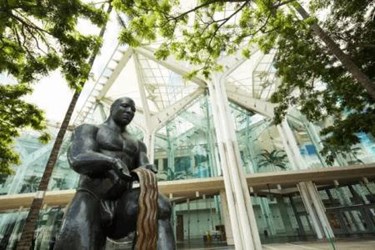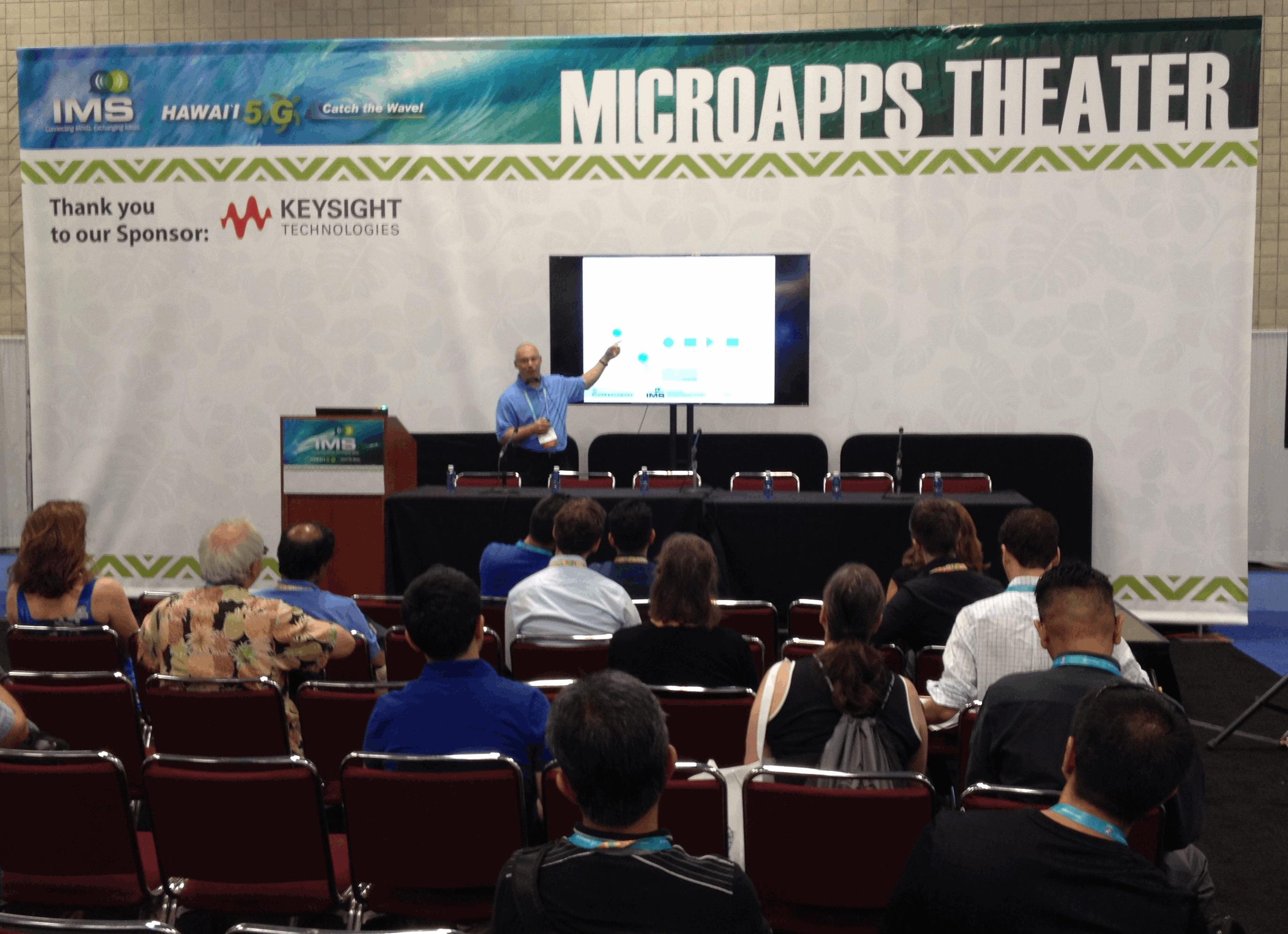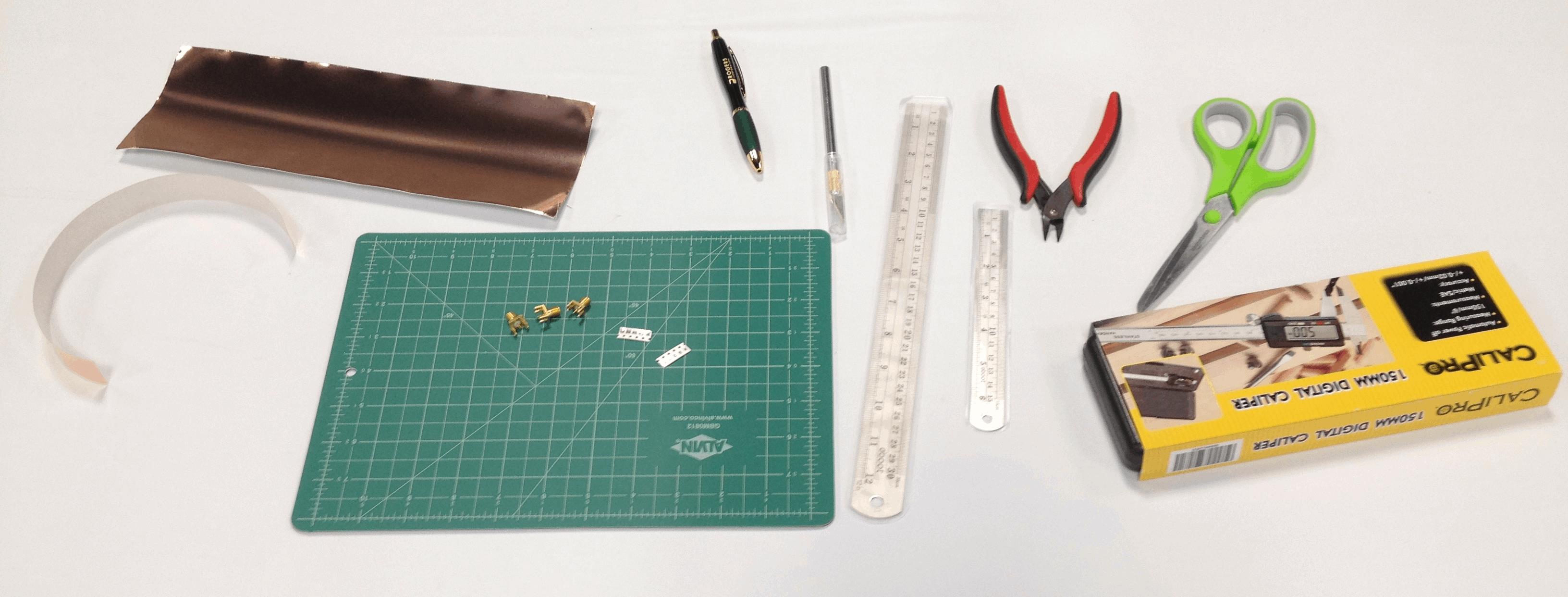Continuing Education At IMS 2017

By Ed Biller

The International Microwave Symposium’s (IMS) return to Honolulu in 2017 — the event also was held at the Hawaii Convention Center in 2007 — brought with it some new events, old favorites, and soon-to-be show staples just establishing their roots.
Among those soon-to-be favorites events was RF Boot Camp. Now in its third year, the day-long crash course in RF/microwave technology and theory is billed as “basics for beginners” — a solid foundation for engineers new to the industry, public relations staff, or media seeking a deeper understanding of our corner of the electronics world.
With a background in print journalism, I fell into the final category, but I was the only one. With me in that packed room on June 4 were a cybersecurity research expert from Sandia National Laboratories, an aerospace engineer from MIT Lincoln Laboratory, an engineer from communications giant Inmarsat, an RF test engineer from medical technology juggernaut Medtronic, plus several master’s-level and PhD candidate students, to name just a few.
An intimidating mix, to be sure – not to mention that the 2017 edition of RF Boot Camp introduced a quiz at the end of each topic discussed — but the instructors were thorough, understanding, and open to questions for clarification. Topics ranged from signal generation and microwave antenna basics to fundamentals of RF simulation and basic RF analog receiver design & analysis.
“Learning in here is just like learning to surf,” said Modelithics’ Larry Dunleavy, one of the day’s instructors. “A few of the waves will go right over your head, but that’s OK. You’ll catch the next one.”
True to that prediction, a few waves crashed over the class’ head, but IMS 2017 afforded ample opportunity to further one’s industry and technological knowledge in other ways.
“Every year that goes by, we take a lot of feedback from the attendees and we try to figure out, what did you guys like? What did you not like so much?” said IMS 2017 co-chair Kevin Miyashiro.
“What demographics are we not servicing? You see that theme really large and in-charge here: We have the women in technology forum, we had the young professionals forum, we have the underrepresented minority forums. We have all these subsegments we’re trying to pull in, depending where they are in their careers.”
Furthermore, Miyashiro said IMS organizers attempt to “cast a wide net” for reasons of both diversity and practicality.
“In earlier years, we’d become very insular, very comfortable with the kinds of people you associate with year after year,” he said, adding that new activities and exhibition attractions help the show to avoid stagnation.
Among the new events this year were Exhibitor Workshops and Microwave Application Seminars (MicroApps), as well as the Three-Minute Thesis competition and the IMS Hackathon.
Exhibitor Workshops comprised 15 two-hour, exhibitor led presentations, followed by in-depth discussion, and represented the most challenging topics discussed away from the show floor. I took advantage of the opportunity to delve more deeply into two of 2017’s hot topics — 5G and millimeter wave (mm-Wave) technology — attending both Mathworks’ “Hybrid Beamforming For 5G Systems” and Keysight Technologies’ “mm-Wave Basics for RF Engineers.” Much like the RF Boot Camp, the skill and experience of individual audience members varied, but everyone walked away with knowledge or perspective they could immediately apply to their own endeavors.

Still, one of my favorite parts of this year’s IMS takes us from today’s experts to the minds who will solve tomorrow’s challenges. The IMS Hackathon and Three-Minute Thesis competitions challenged students and young professionals to live outside the realm of computer-aided design (CAD) simulation and formula-laden academic papers for a few hours, depending upon ingenuity, skill, and raw nerve to succeed.
Hackathon students did not disappoint. Tasked with building a micro-strip power divider (whose design specifics were announced at the event), the 24 teams used a much leaner set of tools than they likely are used to, and within a span of just 30 minutes, most emerged with a functional microwave circuit. Awards were presented to the teams whose circuits demonstrated characteristics including the best isolation and best return loss, as well as a prize for the best overall circuit. You can see the winners here.

Three-Minute Thesis competitors, meanwhile, had to have a paper accepted for either oral or interactive forum presentation at IMS 2017, and then throw their hat in the ring to present their ideas in a three-minute span, supported by one static PowerPoint slide, and in “a language appropriate to a non-specialist audience.”
Daniel Tajik of McMaster University took first place for a smooth presentation of “Microwave Holography: The Future of Medical Imaging,” but no presenter looked out of place (see the other prize winners here). It’s obvious that these young professionals have refined their elevator pitches, and are comfortable delivering explanation and justification for their ideas at a moment’s notice.
Therein lies the true value of IMS, I believe. Of course the annual symposium offers vendors an opportunity to show off their newest wares, and prospective customers the chance to take expensive equipment for a test drive. But it also challenges the industry’s established minds to defend their ideas against up-and-comers (there was a bit of this back-and-forth at the 5G executive Summit and the Plenary Session, but those are stories for another column); it compels new engineers, students, and inexperienced professionals to embrace every learning opportunity — or, more accurately, to make the difficult decisions about which learning opportunities to pursue during the show — and to fearlessly discuss their theories and ideas. In short, it reminds you that there’s always more to learn, and then provides the means to do so.
What educational opportunities stood out to you at this year's IMS? Or, where do you think the show has room to grow? I'd love to hear your thoughts in the Comments section below, or you can let us know via email.
